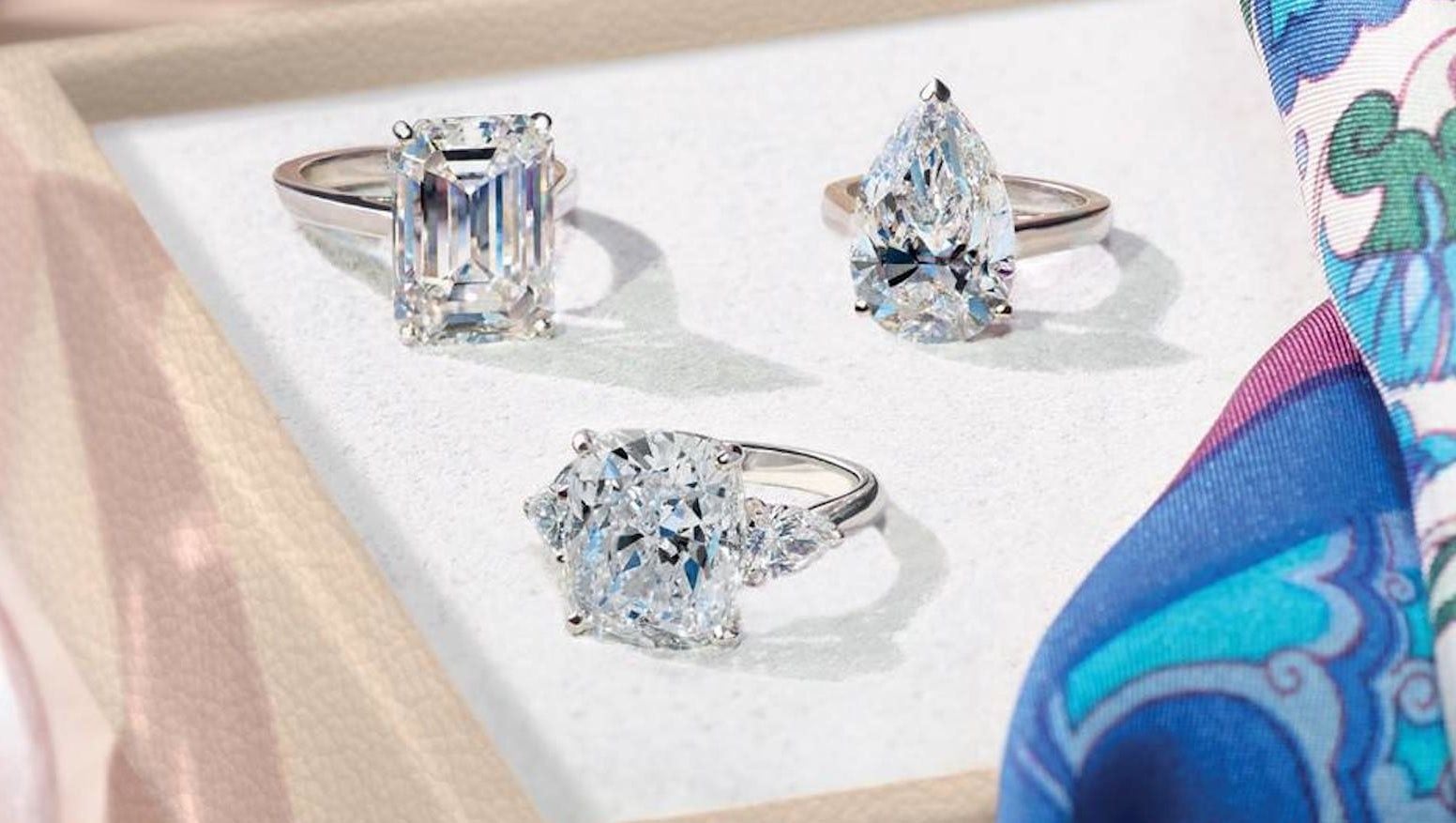
A diamond is forever. But perhaps not for De Beers’ owner Anglo American Plc.
Facing a $39 billion bid from mining giant BHP Group Ltd, the London-listed company is considering offloading the diamond unit, the Wall Street Journal reported last week. Like marketing a stone without the requisite colour or clarity, this wouldn’t be an easy sell.
Prices for rough diamonds have plummeted since a pandemic-driven boom, while man-made stones are revolutionising the industry. A luxury group with deep pockets might seem like an ideal buyer, but any would be reluctant to take on De Beers’ mining and rough-diamond trading operations.
De Beers, which is owned 85 percent by Anglo American and 15 percent by the Government of Botswana, is a storied asset, and these rarely come to market. Once prized names are snapped up, they don’t tend to change hands again. (Think of Cartier, which was acquired by Cie Financiere Richemont in 1993 and remains its crown jewel.) And few are more iconic than De Beers, with it being so synonymous with diamonds.
Given De Beers’ unique nature, it’s hard to value the business. But the best proxy is probably capital employed in the unit, which was $7.3 billion last year. Anglo American and De Beers declined to comment.
That wouldn’t be a stretch for the powerhouses of LVMH Moet Hennessy Louis Vuitton SE or Richemont to pay. (Kering SA, on the other hand, is grappling with turning around Gucci while borrowings have been swelled by a series of acquisitions.) Even after LVMH’s acquisition of Tiffany & Co. for about $16 billion in 2021, jewelry is one of the few areas where it could add scale, hence its rumoured interest in Richemont last year.
What’s more, jewellery is an expanding category for luxury groups. With prices for the most desirable handbags rising more sharply than branded jewels over the past three years, some buyers have been turning to Van Cleef & Arpels bracelets instead.
De Beers has a retail operation, De Beers Jewellers, offering pieces at an entry price point to fine jewels, in 16 markets around the world and online. But the jewellery brands, including its Forevermark diamonds with unique inscriptions, represent just a small part of its operations. Anglo American does not break down De Beers’ revenue, but the majority of its earnings still comes from mining and rough-diamond trading.
Having carefully honed their portfolios to focus on luxury goods, the bling behemoths are unlikely to venture into these businesses. Not only are they a stretch from their core skills of design, brand building and retail, but they carry significant social, environmental and reputational risks. Their customers are getting younger — just look at all those Van Cleef unboxing TikTok videos — and they care deeply about a brand’s values. Then there’s the relationship with Botswana that would also need to be managed.
However, a partnership with someone willing to take ownership of the mining and trading assets is plausible. The Wall Street Journal said Anglo American had also talked to Gulf sovereign wealth funds. Any such arrangement would need to be structured carefully given the perils to consumer facing brands. It’s worth noting that De Beers Jewellers began life as a joint venture with LVMH in 2001. But De Beers bought out its partner in 2017.
Luxury’s reluctance to add De Beers’ upstream operations is not the only reason why the asset might struggle to shine bright for buyers.
The diamond market experienced the same boom and bust as top-end goods. Stuck at home during the pandemic, many shoppers, particularly in the US, directed spending to luxury items. Amid the heightened emotions of the pandemic, some people gave more meaningful gifts, or sought to treat themselves for surviving such a traumatic period. Diamonds appealed on both fronts. With not enough stones available, prices surged, reaching a record high in February 2022, according to diamond expert Paul Zimnisky’s Global Rough Diamond Price Index.
Today, however, affluent American consumers have retrenched, with little sign of improvement. Birkin-maker Hermes International SCA indicated last week that Chinese appetite for top-end goods weakened further in March, which may be weighing on demand. India remains robust, but this is not enough to offset lacklustre sales elsewhere.
In January, De Beers made one of the steepest cuts to its diamond prices in years as it tried to revive gem sales. A month later, Anglo American wrote down the value of the unit by $1.6 billion. De Beers’ Chief Executive Officer Al Cook said that while he expected the diamond market to recover this year, it would be a gradual process.
That brings us to another threat: lab-grown diamonds.
The euphoria over synthetic stones may be waning slightly, and De Beers does have a foothold in this emerging sector with its own lab-grown diamond business, Lightbox. But artificial alternatives still present a substantial risk to the industry, as the cost of creating the gems, and consequently the prices, continue to fall. Lightbox, for example, is experimenting with cheaper pieces.
LVMH Chief Financial Officer Jean-Jacques Guiony has said that lab-grown stones offer possibilities to craft shapes or colors that could not be found in nature. Its Fred jewellery brand last fall unveiled synthetic diamonds in a striking blue shade. Yet Guiony also emphasised the value and emotional connection that the real thing continues to command.
If De Beers does come up for sale, it will need this historic association with love to offset the structural and cyclical headwinds, and encourage a buyer to say “I do.”
By Andrea Felsted
Learn more:
De Beers Warns Diamond Recovery Will Be Slow After Terrible Year
De Beers expects any recovery in the beleaguered diamond market to be slow and gradual as the industry continues to suffer from weak economic growth in key markets such as China and the US.

